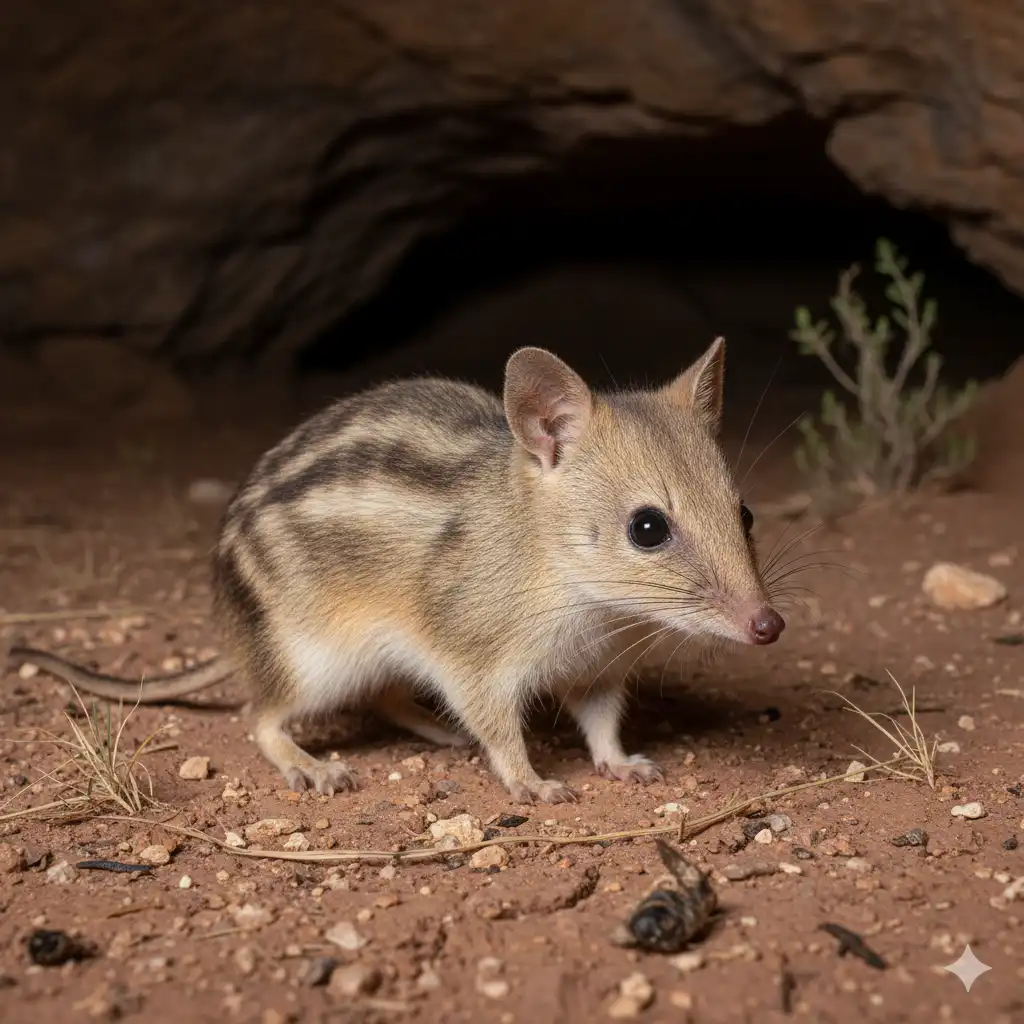Earth Voices News in brief —October 2025
- IUCN has listed the Nullarbor barred bandicoot (Perameles papillon) as Extinct (EX) in its 2025 global Red List update, released at the IUCN World Conservation Congress in Abu Dhabi.
- This marks the species’ first global IUCN assessment, and it joins the Marl (P. myosuros) and South-eastern striped (P. notina) bandicoots in being newly recognised as extinct Australian marsupials.
- Known only from a handful of subfossil and historical specimens from the Nullarbor Plain region; never recorded alive by science.
- Its extinction reflects the collapse of small mammal communities across inland southern Australia during the late 19th and early 20th centuries, driven by introduced predators, habitat degradation, and drought stress.
Epitaph for the Butterfly Bandicoot
Ghost of the limestone sea,
you wore the dust like silk—
a small, bright hush beneath the moon.
No one heard your digging songs,
the soft rain of sand you left behind.
No one marked your passing,
only the wind kept count.
You were the flutter in the desert’s breath,
a heartbeat folded under stone.
Now your name is all that flies—
papillon,
a whisper of wings that never saw the sky.
Contextual background
The Nullarbor barred bandicoot (Perameles papillon) was identified from a limited number of subfossil remains and historical specimens, collected from caves and surface deposits across the Nullarbor Plain, an immense limestone plateau spanning southern Australia. Despite its delicate name—papillon, “butterfly” in French—this small, nocturnal insectivore was never seen alive by European naturalists. Its classification emerged only through modern taxonomic re-examination of museum material in the 21st century.
The IUCN’s 2025 Red List recognised P. papillon for the first time, placing it immediately in the Extinct category. Its loss is presumed to have occurred during the late 1800s or early 1900s, coinciding with the widespread decline of small arid-zone mammals after the introduction of foxes, feral cats, and rabbits. Combined with overgrazing, vegetation loss, and the fragmentation of refugia, these pressures devastated entire ecological guilds of soil-turning marsupials.
Although little direct knowledge of P. papillon survives, its existence hints at the diversity once thriving in Australia’s deserts and plains. The “butterfly bandicoot” stands as a symbol of the quiet extinctions that reshaped the continent’s ecology before systematic wildlife records began—reminding us that absence, too, has a history worth naming.
